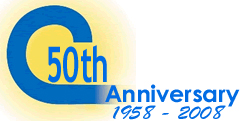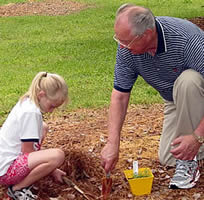 Yuma Conservation District celebrates 50 years of conservation services for landowners and land users in western Yuma County in partnership with Natural Resources Conservation Service (formerly Soil Conservation Services).
Yuma Conservation District celebrates 50 years of conservation services for landowners and land users in western Yuma County in partnership with Natural Resources Conservation Service (formerly Soil Conservation Services).
The district was formed in 1958 to provide local supervision of federal workers on public lands. Our mission is still providing locally led conservation to protect natural resources while maintaining productive agricultural lands.
“Back to the Future”
In 2008, we celebrate the past while looking forward to the future. We face great challenges today with water issues – can we sustain the Ogallala Aquifer, maintain our agricultural economy and not be penalized by Interstate Compacts for being good stewards?
We faced the challenge and overcame the devastation of the Dust Bowl. We can meet today’s challenges with the same type of dedication and commitment.
Join us this year for a look back at our history together which will culminate with a dinner celebration in November.
District Origins and History
On August 15, 1958, a meeting was held at the library in Yuma to determine the need for a soil conservation district. Area landowners felt because of the land use change in the Yuma area, more technical assistance was needed. An organizational meeting was held on October 8, 1958 at Perry Blach’s home. Eight people attended the first meeting and became the Yuma SCD’s first Board of Supervisors.
 They were: Perry Blach, Sherman Blach, Milton “Bud” Mekelburg, Vernon Myers, Marvin Brockmeier, Harold Peterson, Dale Monk, and Frank Herman.
They were: Perry Blach, Sherman Blach, Milton “Bud” Mekelburg, Vernon Myers, Marvin Brockmeier, Harold Peterson, Dale Monk, and Frank Herman.
On the 18th day of November 1958, the Yuma Soil Conservation District became a lawful entity under the provisions of the Colorado State Conservation Act.
The district office has been headquartered in many locations: second floor of Mustains, Anderson Lumber, what was originally called the Meis and Pounds Building north of L&L, 804 S. Ash, and the Heltenberg Building at 806 West 8th Avenue. In October of 1995, the district purchased the building at 508 East 8th Avenue and moved the office there.
The first Soil Conservation District Conservationist was Tom Skillman in 1958. Merl Shibble was hired through the Soil Conservation Service in 1958 as the first district manager. The district newsletter was published in 1960. Its purpose was to keep area residents informed on what the district was doing.
Many “firsts
Several first events have happened in the district. The district helped establish the first youth board in the state. Nina Stulp, an educator, was the first advisor. The first living snow fence was planted in the district area. The Yuma District was one of the first to use weed barrier on tree plantings. A field windbreak demonstration project was planted at Mekelburg’s, and a snow dispersal windbreak demonstration project was planted at Oestman’s. The first flat channel terraces in the state were installed in the Yuma District.
In May of 1996, an election was held and a mill levy was approved for the district. Other funds for district projects are received through the State Conservation Board, an agency of the Colorado Department of Agriculture, sales of supplies, and special grants.
Information for this article was taken from The Yuma SCD Newsletter, Vol. 2, No. 2, September – October 1998
Filed under: Back to the Future - 50th Anniversary | Comments Off on Yuma Conservation District celebrates 50 years of conservation history














You must be logged in to post a comment.